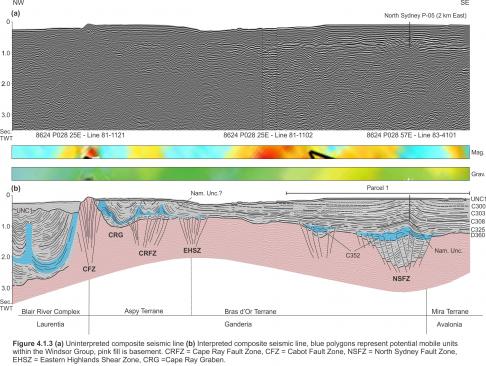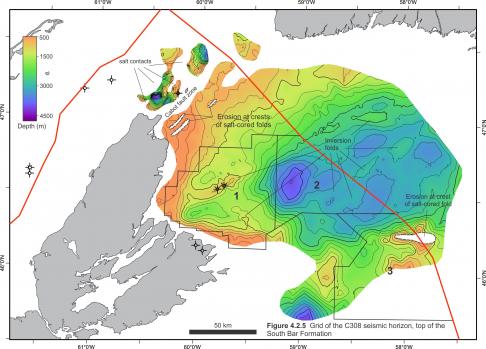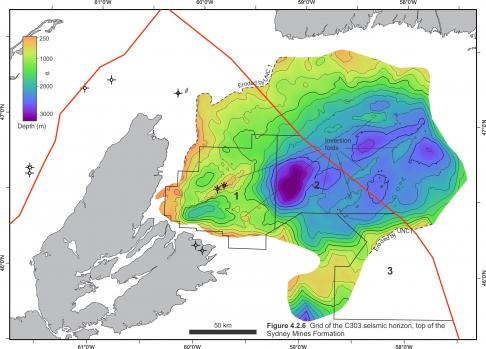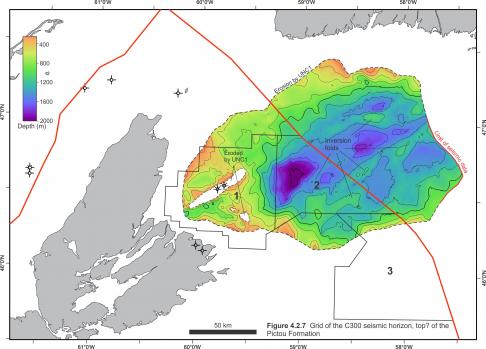The hydrocarbon potential of the Sydney Basin and other Paleozoic basins is eastern Canada was the focus of multiple recent studies. Within these studies, Hu and Dieterich (2010), Dieterich et al. (2011), Hannigan and Dieterich (2012), all conclude that all necessary elements are in place for a working petroleum system within Sydney Basin. The seismic mapping within these studies also supports these conclusions and helps to illustrate a number of play types. The two North Sydney wells, in the offshore Sydney Basin, did not penetrate the Horton Group which is the interval interpreted to have the greatest hydrocarbon potential and only evaluated the shallower Late Carboniferous formations. Both North Sydney wells have proven gas charge in Late Carboniferous reservoir sandstones. In the North Sydney F-24 well, two zones with limited porosity were flow tested with no recovery. It should be noted, that the porosity of the sands tested in F-24 are lower than the porosities encountered in the equivalent formations in the North Sydney P-05 well. Flow testing of these higher quality reservoir sands, in P-05, may have resulted in a successful test. Other inversion-related anticlines are present within Parcels 1 and 2 (Figures 4.2.5, 4.2.6 and 4.2.7). The subtle folds within Parcels 2 overlie the thicker main depocenter of the Sydney Basin, and are believed to contain intervals with more favorable reservoir properties (Figure 4.1.4).
Intra-Horton faulted traps and stratigraphic plays are interpreted to have greater oil and gas potential than the shallower intervals that have been evaluated to date. A clear understanding of the inversion history of the basin may locate regions where the burial depths of the oil and gas prone Horton and McAdams Lake lacustrine shales were suppressed and the units remained within the oil window. Where this setting exists, oil-charged plays are possible, with sandstone units of the Horton Group being a potential reservoir (Figure 4.1.4 (b) and (c)). Horton shales will act as intra-formational seals for this play. There is seismic evidence that Windsor evaporites are present in the CRG, and a diapir is also noted within Parcel 3. (Figures 4.1.3 and 4.2.4). The identification of these salt features prove that Windsor evaporites were deposited within Sydney Basin, and may also be considered a sealing unit to the underlying Horton plays within Parcels 1, 2 and 3.
The Windsor Group’s Gays River Formation reefs may also be a potential reservoir for Horton generated hydrocarbons. These reefs would be localised, and potentially difficult to identify on the current seismic data, but are likely present. Onshore, these reefs are common where the Gays River Formation oversteps basin bounding topography.







